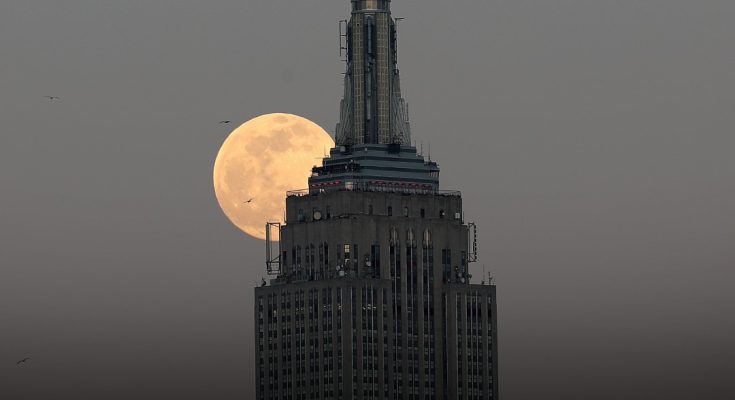The full Snow Moon, February’s only full moon, will light up the night sky on February 12, 2025, reaching peak illumination at 8:53 a.m. EST. Although it won’t be visible at that exact moment, stargazers can catch its best view on the evenings of February 11 and 12. Here’s what makes this moon special and how to enjoy it.
February’s full Snow Moon gets its name from the harsh winter weather typical of this time of year. Heavy snowfall made survival challenging for early Native American tribes, who used full moons to track seasonal changes.
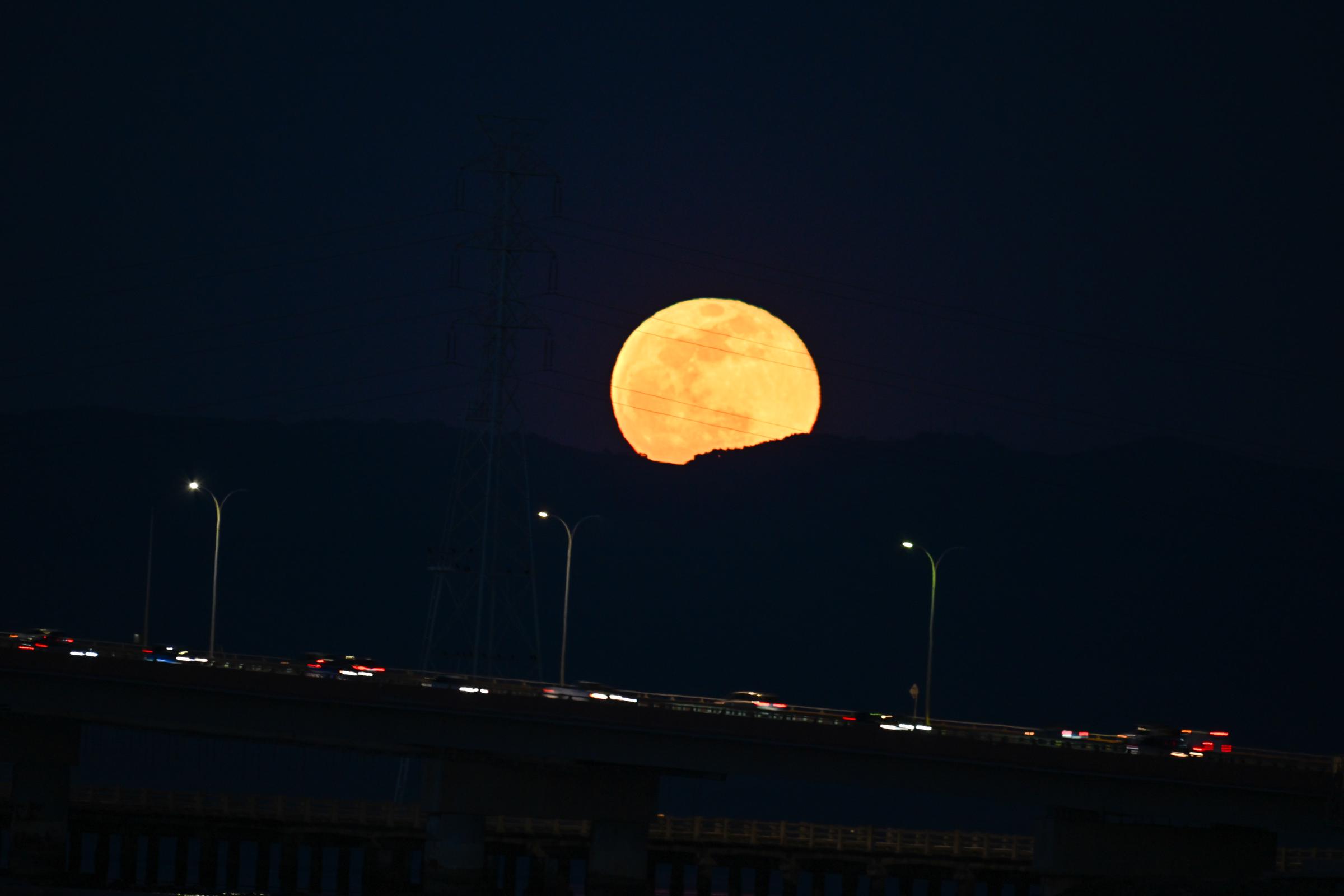
Full Snow Moon rises over San Mateo Bridge of San Francisco Bay in San Mateo, California on February 24, 2024 | Source: Getty Images
This year, the Snow Moon will reach its peak on February 12 at 8:53 a.m. EST. Beyond the Snow Moon, February’s night sky is also filled with bright planets and celestial events that are well worth watching.
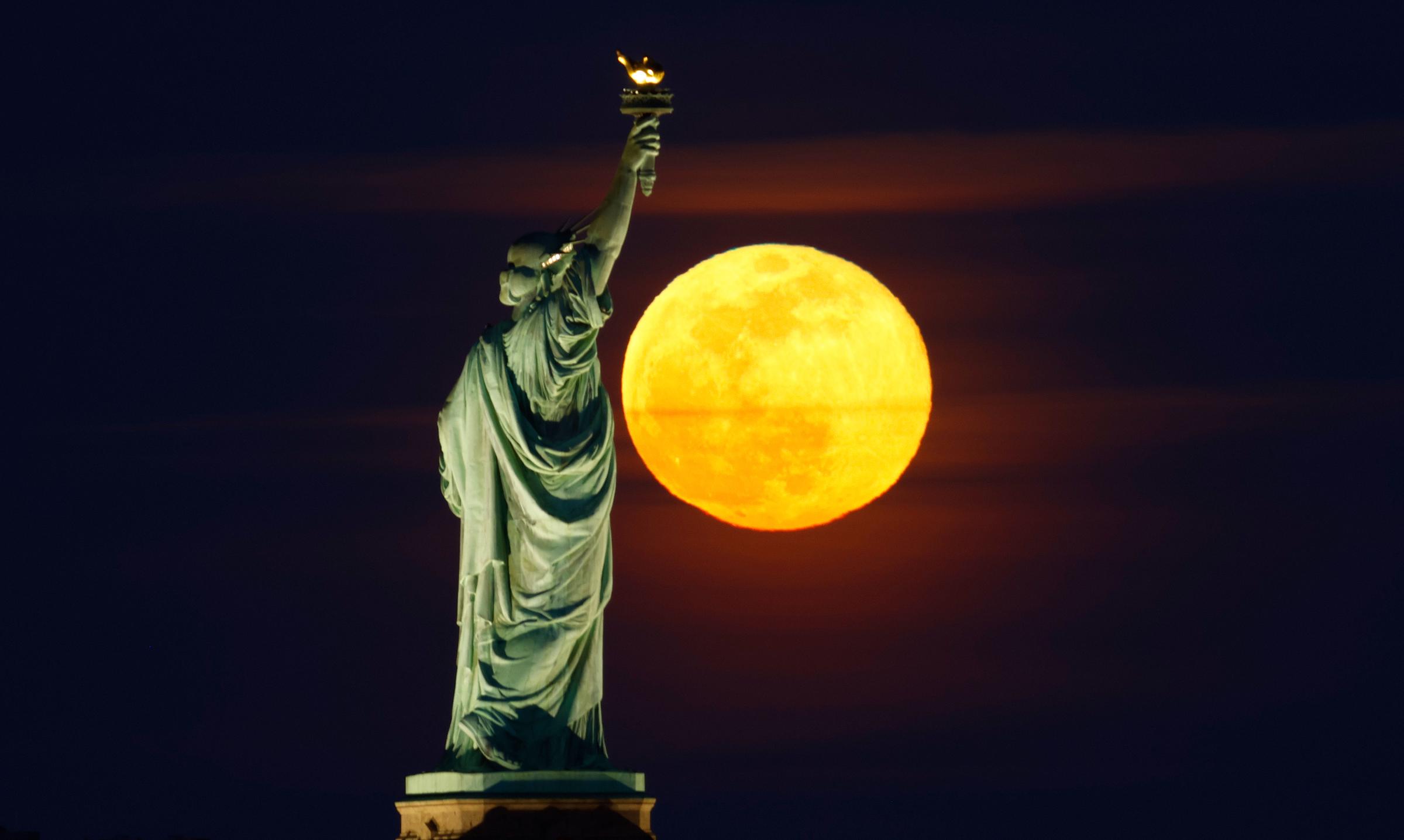
The full Snow Moon rises behind the Statue of Liberty and Brooklyn in New York City on February 24, 2024, as seen from Jersey City, New Jersey | Source: Getty Images
When and How to See the Full Snow Moon
The Snow Moon offers two prime nights for viewing: February 11 and 12. Although it officially peaks on the 12th, it will appear full on both nights, giving you plenty of time to catch the show.
- Best Viewing Times: The moon rises in the east around sunset, reaches its highest point at midnight, and sets in the west before sunrise.
- Clear skies will give you the best chance to see its bright, silvery glow.
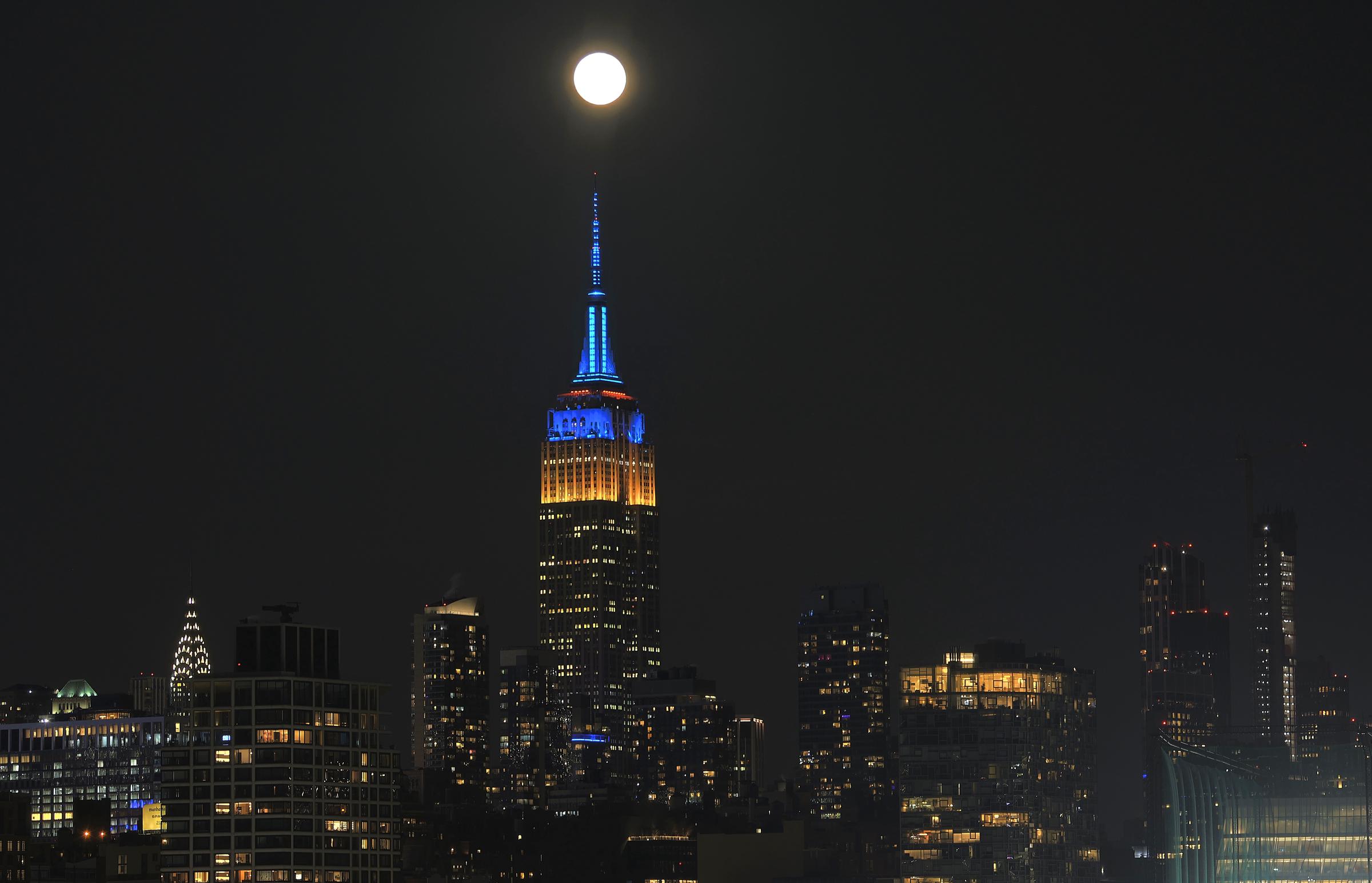
The full Snow Moon rises above the Empire State Building lit in the colors of the flag of Ukraine in New York City on February 24, 2024 | Source: Getty Images
Why Is It Called the Snow Moon?
February’s snowy reputation makes the Snow Moon’s name a natural fit. Data from the National Weather Service confirms that February is historically the snowiest month in the U.S.
Captain Jonathan Carver, who spent time with the Dakota people in the 1760s, noted that they called it the Snow Moon because it coincided with frequent snowstorms.
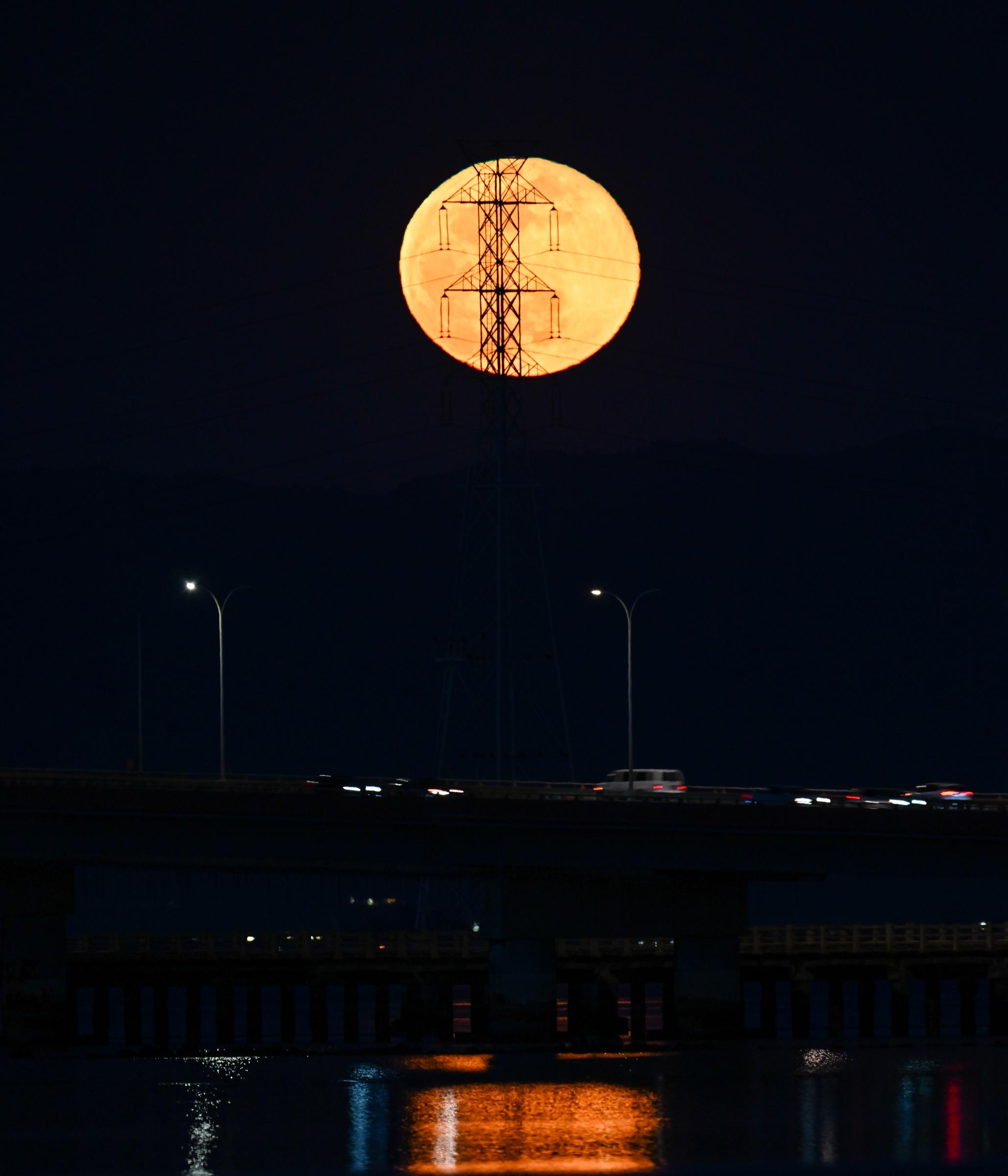
Full Snow Moon rises over San Mateo Bridge of San Francisco Bay in San Mateo, California on February 24, 2024 | Source: Getty Images
Several Native American tribes had their own names for this moon, each reflecting the season’s challenges or natural events:
- Cree: Bald Eagle Moon
- Ojibwe: Bear Moon, marking the time when bear cubs are born
- Dakota: Raccoon Moon
- Haida: Goose Moon, signaling the return of geese
Other names, such as the Cherokee’s Hungry Moon, are a stark reminder of how difficult it was to find food during February’s harsh conditions.
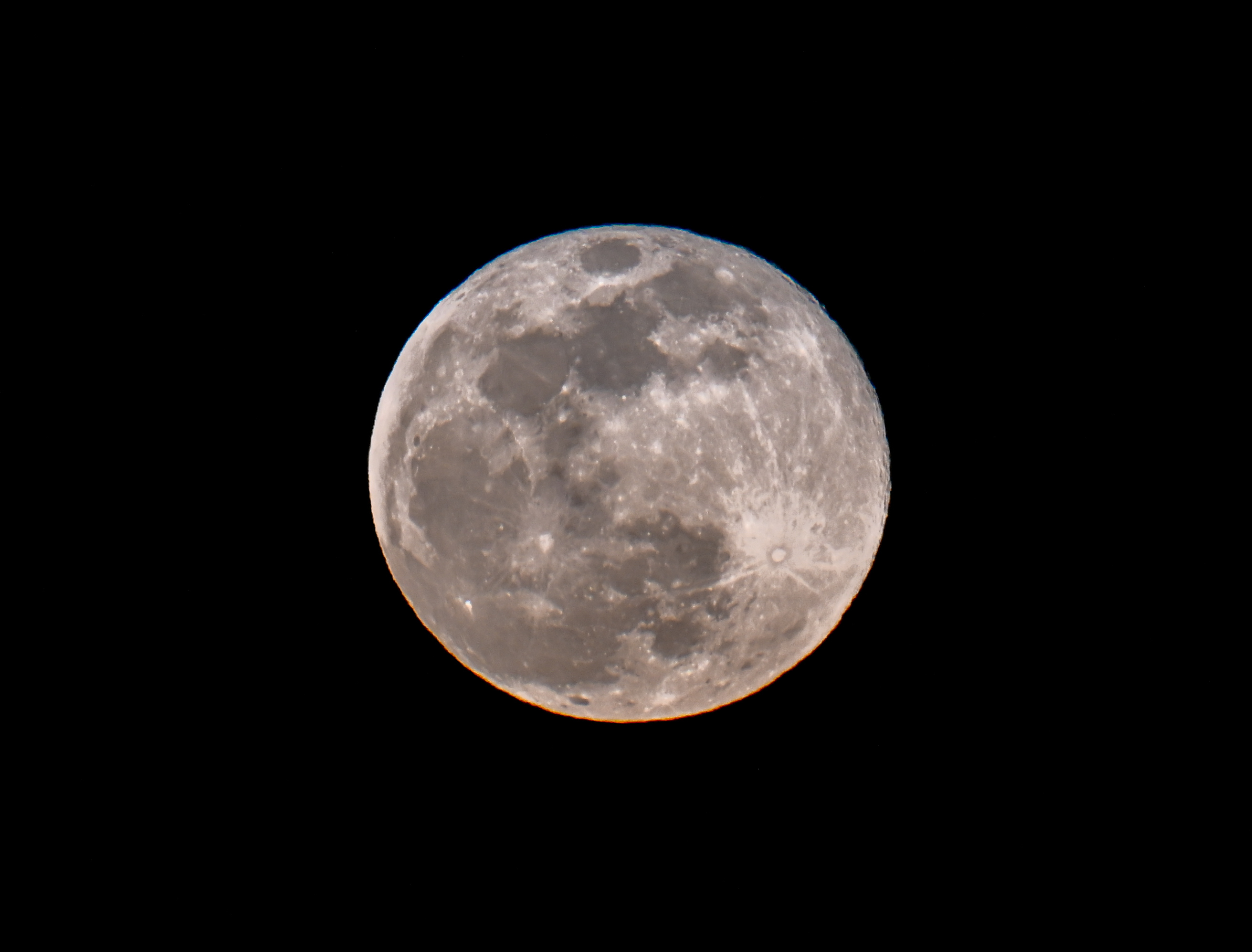
Full Snow Moon rises over San Mateo Bridge of San Francisco Bay on February 24, 2024 | Source: Getty Images
February’s Night Sky: What Else to Look For
In addition to the Snow Moon, February offers plenty of other celestial sights worth catching. Several planets will be visible throughout the month, making it a great time for stargazing.
- Venus: The brightest planet in the western sky after sunset, shining brilliantly all month.
- Mars: High in the east with its distinct amber-orange glow.
- Jupiter: Bright and easy to spot high overhead in the evening.
- Saturn: Fainter than the others, visible in the west just after sunset early in the month.
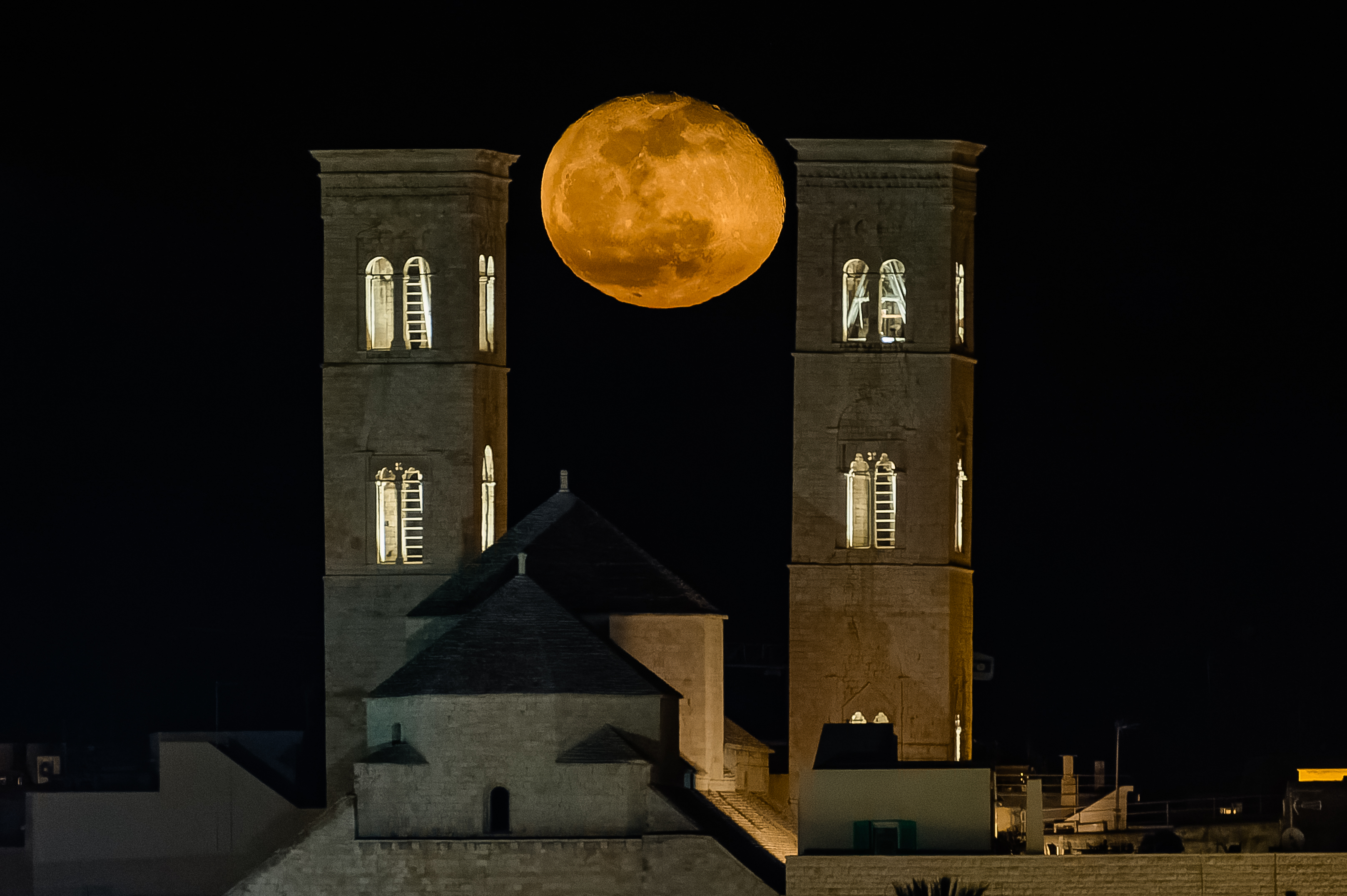
The full moon is rising behind the towers of Molfetta Cathedral in Molfetta, Italy, on February 26, 2024 | Source: Getty Images
Notable Skywatching Events Leading Up to the Snow Moon
- February 5: The Moon passes close to the Pleiades star cluster at nightfall.
- February 9: A nearly full Moon appears below Mars in the eastern sky, with the twin stars Pollux and Castor nearby.
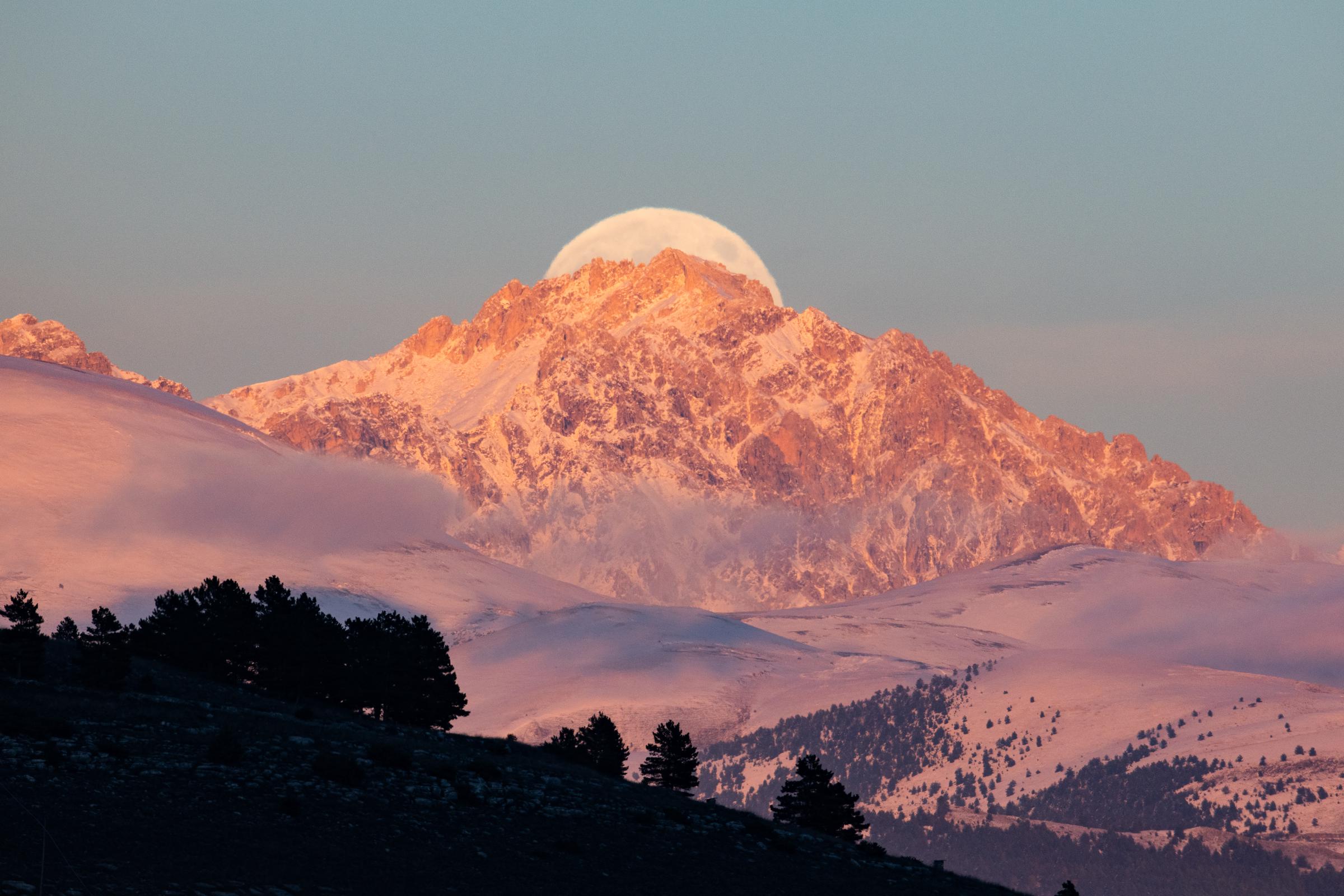
Beaver full moon rising behind Monte Prena peaks is seen from L’Aquila, Italy, on November 15, 2024 | Source: Getty Images
Cultural Significance and Lunar Calendar Connections
The Snow Moon aligns with several significant dates in different cultures.
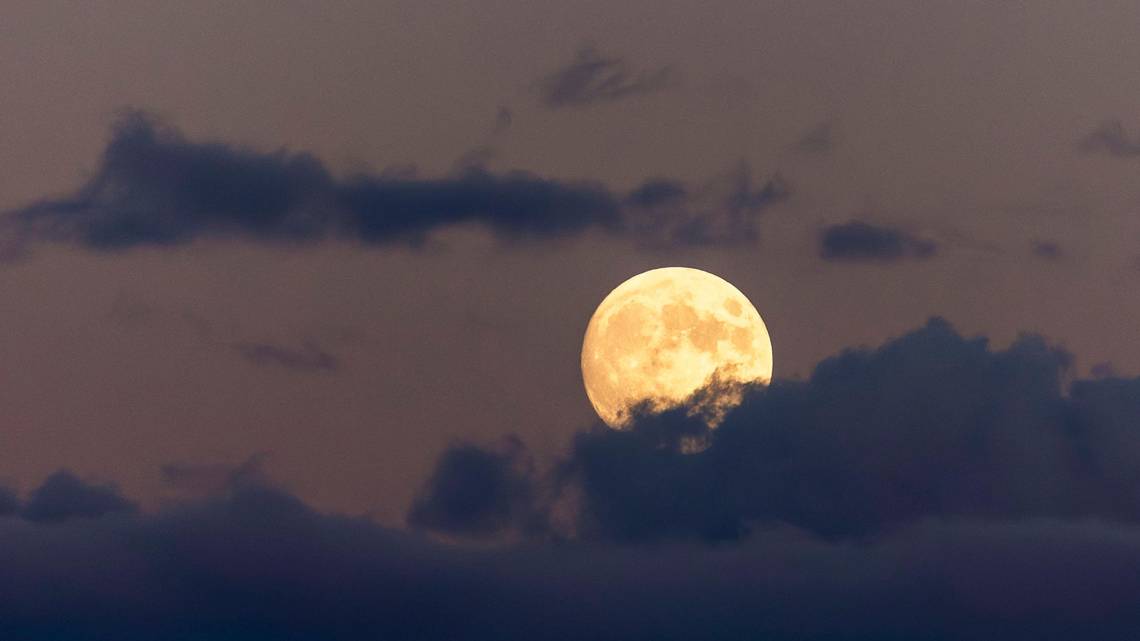
A nearly full pre-Halloween moon rises in the east over Boise at dusk on October 27, 2023 | Source: Getty Images
- Tu BiShvat: In the Hebrew calendar, this full moon marks the 15th day of Shevat, celebrated as Tu BiShvat, also known as the “New Year of the Trees.” In Israel, it’s a day for planting trees and raising ecological awareness.
- Chinese Lunar Calendar: The Snow Moon falls in the middle of the first month of the Chinese calendar.
- Islamic Calendar: It coincides with the middle of Jumada al-Awwal, the fifth month in the Islamic lunar calendar.
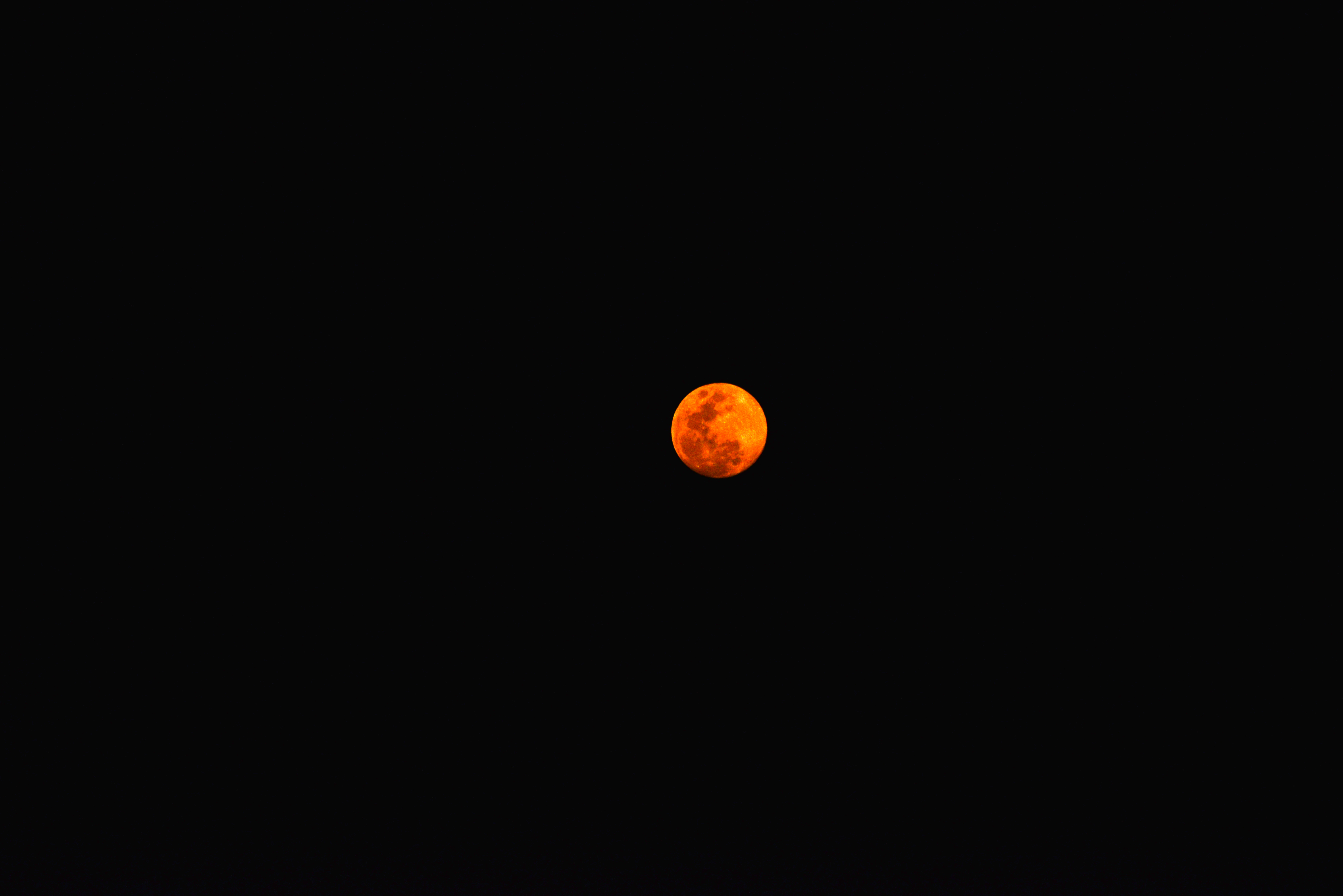
The Snow Moon, rises in Siliguri, India, on February 11, 2025 | Source: Getty Images
February’s full Snow Moon offers a breathtaking view and a glimpse into history and tradition. Whether a seasoned stargazer or just curious about the night sky, this midwinter moon is a perfect excuse to head outside and soak in nature’s rhythms.
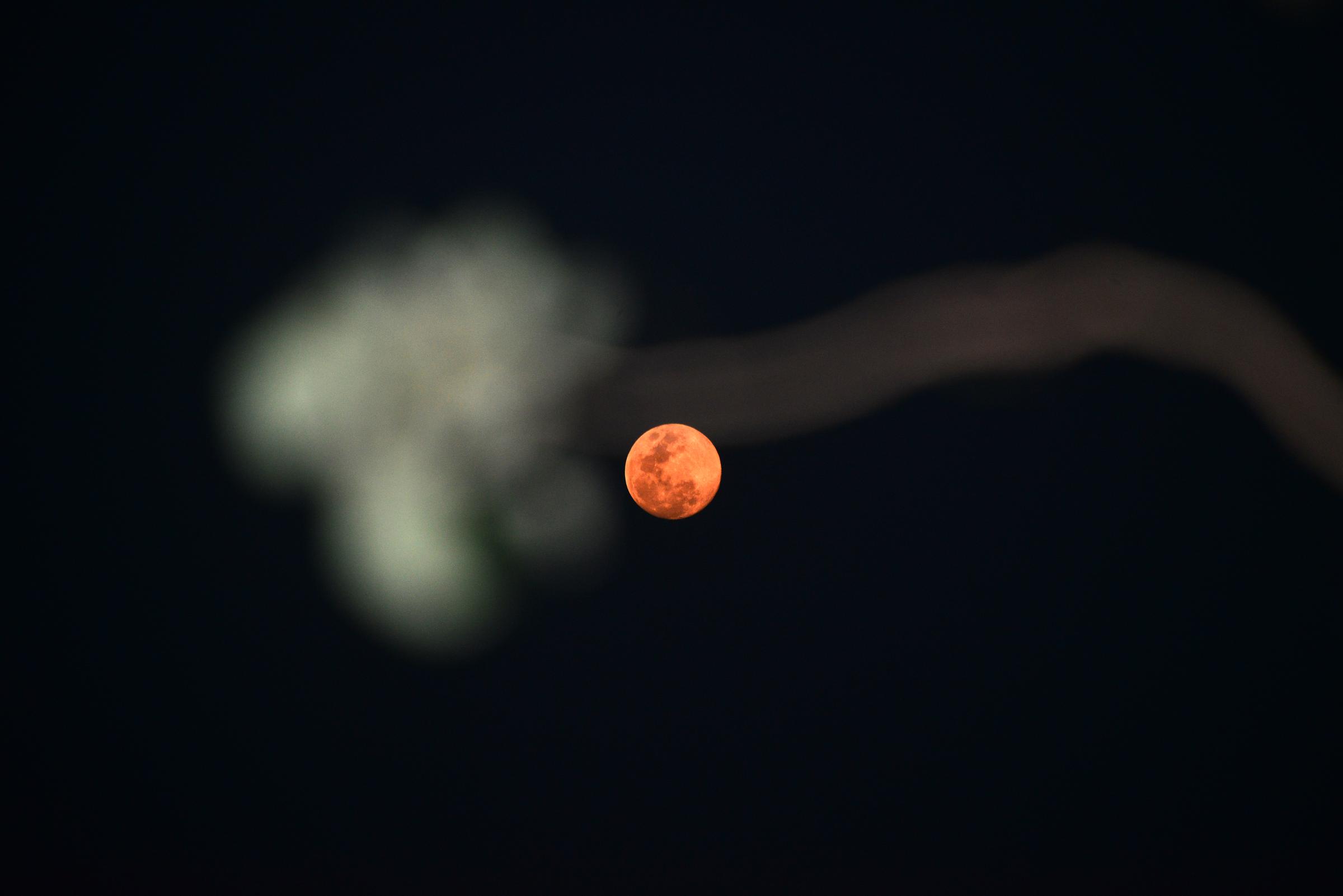
A full moon, called the Snow Moon, rises in Siliguri, India, on February 11, 2025 | Source: Getty Images
Don’t forget to watch for bright planets like Venus and Mars while you’re at it — it’s a celestial show worth catching!
